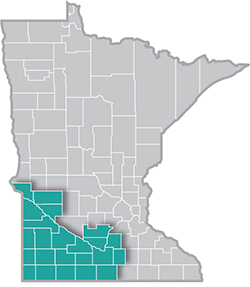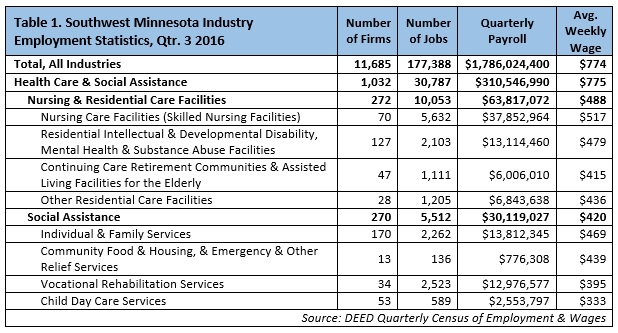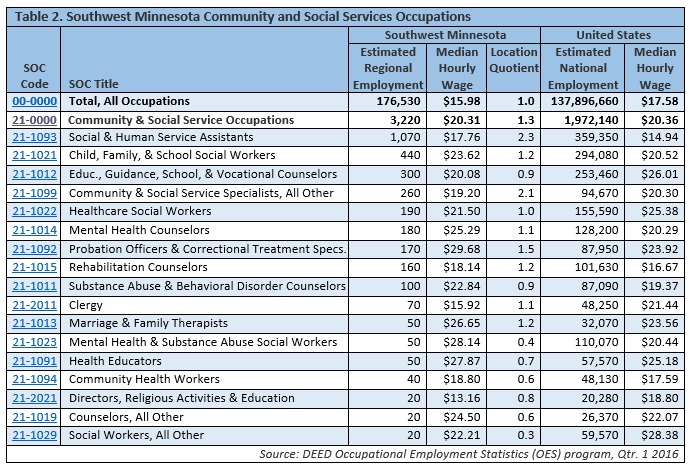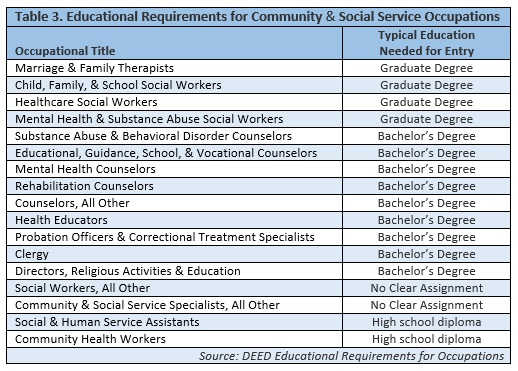 Southwest Minnesota is a national leader in agricultural production, and renewable energy.
Southwest Minnesota is a national leader in agricultural production, and renewable energy.
The region's thriving manufacturing sector includes food processing, machinery, printing, metal products, and computers and electronic products.
Want the freshest data delivered by email? Subscribe to our regional newsletters.
5/4/2017 9:54:04 AM
Luke Greiner
Because of the outsized influence of health care on the regional economy, workforce efforts have focused on training people in health care support and practitioner occupations such as certified nursing assistants (CNAs), home health aides (HHAs), personal care aides (PCAs), registered nurses (RNs), and licensed practical nurses (LPNs), among others. Most new workers are absorbed into the labor force as quickly as they can be trained and are projected to remain in high demand in the next decade.
Medical care represents just one part of the exploding need for health care and social assistance services in the region. Southwest Minnesota is also experiencing tremendous growth in services for the disabled, elderly, low income, or other underrepresented populations, helping find and obtain employment, housing, financial assistance, or other social services.
Nursing and Residential Care Facilities is the largest employing health care sector in Southwest Minnesota, providing about 10,000 jobs at 272 establishments through the third quarter of 2016.
This included over 5,600 jobs at skilled nursing care facilities; over 2,100 jobs at residential disability, mental health, and substance abuse facilities; and 1,111 jobs at assisted living facilities for the elderly. In addition, there were 5,500 jobs at 270 Social Assistance providers, including more than 2,500 jobs at vocational rehabilitation services and 2,262 jobs providing individual and family services (Table 1).

Because of this strong concentration, Community and Social Services occupations have a location quotient of 1.3 in Southwest Minnesota when compared to the U.S. economy, meaning that the share of these jobs is higher in the region compared to the rest of the nation. Overall, eight of the 17 occupations in the group have location quotients above 1.0 (Table 2).

With estimated regional employment of 1,070 workers, Social and Human Service Assistants have the highest location quotient of the community and social services occupations, being 2.3 times more concentrated in Southwest than the country. It is the 32nd largest occupation in Southwest Minnesota, but barely cracks the top 100 occupations nationwide, ranking 89th overall.
According to DEED’s Career and Education Explorer tool, social and human service assistants "assist in providing client services in a wide variety of fields, such as psychology, rehabilitation, or social work, including support for families," and "may assist clients in identifying and obtaining available benefits and social and community services" or "assist social workers with developing, organizing, and conducting programs to prevent and resolve problems relevant to substance abuse, human relationships, rehabilitation, or dependent care."
Other job titles include case worker, case aide, case manager, advocate, daily living specialist, clinical assistant, or addictions counselor assistant. Whatever the setting, people in this job need active listening, social perceptiveness, time management, and decision-making skills. Workers are in constant contact with other people, and should have a service orientation that leads them to look actively for ways to help people and ensure the safety and security of their clients.
The typical entry-level educational requirement is a high school diploma and short-term on-the-job training, but nearly three-fourths of people working as social and human service assistants in Minnesota have at least some college experience, including 31 percent who have a bachelor’s degree or higher. According to data from the most recent Job Vacancy Survey, just 35 percent of the current openings for social and human service assistants in Southwest Minnesota require post-secondary education, and the median wage offer was $10.00 per hour, showing there may be a misalignment between job seeker expectations and employer needs.
In contrast, the majority of the occupations in the community and social services group require at least a bachelor’s degree, with many preferring a master’s degree. Social workers, whether in mental health and substance abuse, health care, or child, family, and school settings, all require a graduate degree, while most positions for counselors call for a bachelor’s degree (Table 3).

Southwest Minnesota is expected to see continued growth in demand for community and social service occupations and will also need to fill existing jobs that become open when current workers retire or leave the labor force for other reasons. According to DEED's 2014 to 2024 Employment Outlook, the region is projected to add over 215 net new jobs in community and social service and may have 950 replacement openings to fill. Opportunities will abound for these jobs.
Contact Luke Greiner at 320-308-5378 or email luke.greiner@state.mn.us or Mark Schultz.